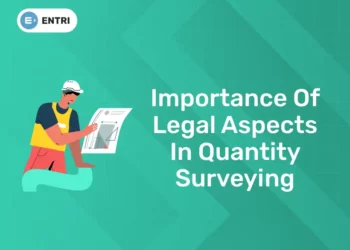Table of Contents
The Staff Selection Commission (SSC) selects suitable candidates for several Group B and C (Gazetted and non-Gazetted) posts in various institutions under Government of India through Combined Graduate Level (CGL) Examination. As the name suggests, these posts are for graduates between the age of 18 and 32. Eligible candidates are selected through a four tier examination conducted by the Commission. Tier 1 and Tier 2 are online exams whereas Tier 3 and Tier 4 are offline exams.
SSC CGL Assistant Enforcement Officer Job Profile
SSC CGL Assistant Enforcement Officer is a Group ‘B’ post in the Enforcement Directorate which commands a lot of respect and power. It is a law and economic investigation enforcement agency under the Ministry of Finance, Government of India. Assistant Enforcement Officer is responsible for enforcing economic laws and investigating offenses of money laundering and violation of foreign exchange laws. The newly recruited officers undergo seven days of training in Delhi. The training covers functions of the Enforcement Directorate, roles and responsibilities of an Assistant Enforcement Officer, Acts involved in dealing with investigations etc.
The two main responsibilities of the Assistant Enforcement Officer is to enforce the two laws of the Enforcement Directorate i.e.
- Foreign Exchange Management Act (FEMA), 1999
- Prevention of Money Laundering Act (PMLA), 2022
The job profile of an Assistant Enforcement Officer involves both desk job and field work.
Desk Job:
He/ she has to review documents such as reports, presentations and brochures submitted by various organizations and correspond via official letters, maintain files, do data analysis, and manage intra-departmental communication.
Field Work:
He/ she has to gather information about money laundering or check crimes of economic nature and conduct raids, search surveillance etc.
If posted in an office then one usually has the regular 9 to 5 timing, but if it’s field work then one will have to work in shifts. When on raid or search, one may have to work for longer and uncertain durations. Recording statements can take a whole day and search actions which generally start early morning may end up very late in the night.
SSC CGL Assistant Enforcement Officer Career Growth
Generally, an Assistant Enforcement Officer gets promotion within 3 years of joining the service. The first two promotions for an AEO is achievable within the first 8 to 9 years. After this, the next promotion takes some time. All the promotions are managed by the headquarters located at Delhi.
The hierarchy of growth for Assistant Enforcement Director and years of service required is as follows:
- Enforcement Officer – 3 to 4 Years
- Assistant Director – 6 to 8 Years
- Deputy Director – 8 to10 Years
- Joint Director – 8 to10 Years
- Additional Director – 8 to10 Years
- Special Director in Enforcement Directorate
Transfers are usually carried out in two circumstances, if there are any allegations against the candidate or if the applicant has requested the transfer. You will not be disturbed after the transfer for at least 3 years. One is deployed for a minimum period of 3 years at a specific location.
SSC CGL Assistant Enforcement Officer Salary
Under the 7th Pay Commission, SSC CGL Assistant Enforcement officer post comes under 4600 grade pay and will be paid in the pay scale of Rs 44,900 to Rs. 1,42,400. The approximate in-hand monthly salary of an SSC CGL Assistant Enforcement Officer will be Rs 67,615 to Rs. 78,046. Apart from the basic salary, they are eligible for various allowances like House Rent Allowance (HRA), Travel Allowance (TA) etc. The allowance depends on the city one is posted in.
The city wise allowance of Assistant Enforcement Officer is mentioned in the table below:
| Basic + Allowances | X category | Y category | Z category |
|---|---|---|---|
| Basic | 44900 | 44900 | 44900 |
| DA | 0 | 0 | 0 |
| HRA | 10776 | 7184 | 3592 |
| TA | 3600 | 1800 | 1800 |
| DA and TA | 0 | 0 | 0 |
| Gross salary | 59276 | 53884 | 50292 |
| NPS | 4490 | 4490 | 4490 |
| CGHS | 325 | 325 | 325 |
| CGEGIS | 2500 | 2500 | 2500 |
| Deductions | 7315 | 7315 | 7315 |
| Salary in Hand | 51961 | 46569 | 42977 |
Classification of Cities
A city with a population of 50 lakh and more is classified as a Class X city, while cities with a population of 5 lakh to 50 lakh are categorized as Class Y cities, and the rest of the cities come under Class Z cities. The various categories and the cities are given in the table below:
| Category | City |
|---|---|
| X | Ahmedabad, Bengaluru, Chennai, Delhi, Hyderabad, Kolkata, Mumbai, and Pune |
| Y | Agra, Ajmer, Aligarh, Amravati, Amritsar, Asansol, Aurangabad, Bareilly, Belgaum, Bhavnagar, Bhiwandi, Bhopal, Bhubaneswar, Bikaner, Bilaspur, Bokaro Steel City, Chandigarh, Coimbatore, Cuttack, Dehradun, Dhanbad, Bhilai, Durgapur, Erode, Faridabad, Firozabad, Ghaziabad, Gorakhpur, Gulbarga, Guntur, Gwalior, Gurgaon, Guwahati, Hamirpur, Hubli–Dharwad, Indore, Jabalpur, Jaipur, Jalandhar, Jalgaon, Jammu, Jamnagar, Jamshedpur, Jhansi, Jodhpur, Kakinada, Kannur, Kanpur, Karnal, Kochi, Kolhapur, Kollam, Kozhikode, Kurnool, Ludhiana, Lucknow, Madurai, Malappuram, Mathura, Mangalore, Meerut, Moradabad, Mysore, Nagpur, Nanded, Nashik, Nellore, Noida, Patna, Pondicherry, Purulia, Prayagraj, Raipur, Rajkot, Rajahmundry, Ranchi, Rourkela, Ratlam, Salem, Sangli, Shimla, Siliguri, Solapur, Srinagar, Surat, Thanjavur, Thiruvananthapuram, Thrissur, Tiruchirappalli, Tirunelveli, Tiruvannamalai, Ujjain, Bijapur, Vadodara, Varanasi, Vasai-Virar City, Vijayawada, Visakhapatnam, Vellore, and Warangal |
| Z | All other cities |











